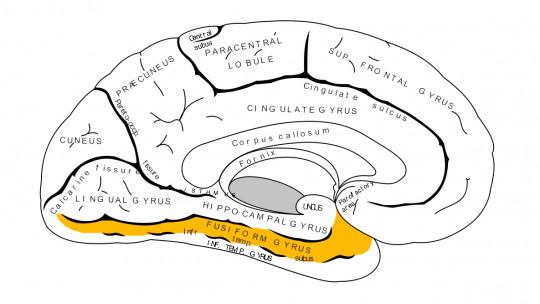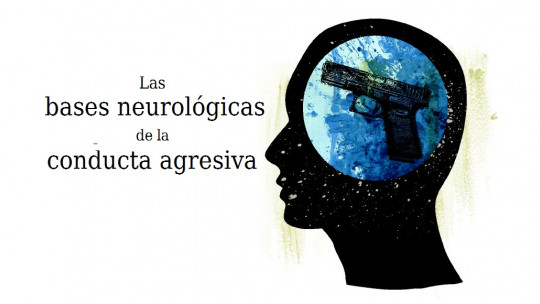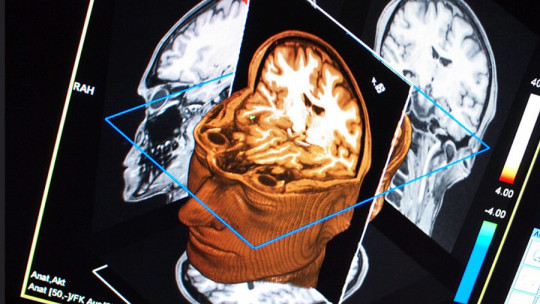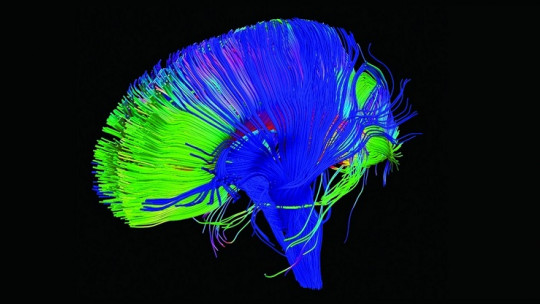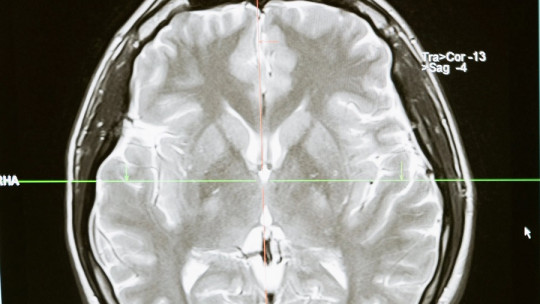
The neurological bases of reading have been of great interest to the scientific community especially with regard to literacy disorders.
Since the first neuroanatomical studies were carried out on the areas involved in this remarkable capacity of the human species, it has been suggested that there are many areas and pathways involved in the identification, coding and pronunciation of letters and words.
Below we briefly review the neurological bases of reading, what data has been collected over the years and what effects there would be at the brain level in people who have dyslexia.
What are the neurological bases of reading?
Reading and writing are skills that greatly distinguish us from the rest of the animal species. These two are very interesting components of language, a skill that has always been the subject of study within the scientific community when trying to see if in other species a capacity that is so normalized in our species could be replicated.
As might be expected, scientists have focused their attention on the brain, trying to see which areas are involved in language and specifically in reading and writing.
Neurological hypotheses of reading
One of the first researchers to make descriptions of the neurological processes behind writing and reading was Joseph Jules Dejerine, who obtained valuable data through the study of clinical cases of people with literacy disorders. These studies were carried out at the end of the 19th century and Dejerine is credited with having identified the alexia syndrome with and without agraphia in 1892 studying patients who presented vascular lesions due to infarctions in the left parietal and occipital areas.
Thanks to the work of Dejerine it was possible to carry out the first systematizations of brain areas and, following a connectionist model, over time the involvement of several areas would be suggested.
Among these would be the participation of the left occipital cortex, involved in visual processing; the left temporo-parieto-occipital area, which would be responsible for visuo-verbal integration; the angular gyrus, with the skill of linguistic coding; the posterior temporal cortex, responsible for semantic access; and the left inferior frontal cortex, responsible for motor speech.
But not all the credit goes to Dejerine. Many other researchers over the last two centuries have contributed to clarifying the neurological bases of reading. Among them we have Norman Geschwind, who studied the convergence of bihemispheric visual afferent in the left occipital cortex from which information would be projected to the ipsilateral angular gyrus, a region that is considered the center of visual images of words. This information would then pass to the posterior temporal cortex and, from there, to Broca’s area through the arcuate fasciculus.

The left occipital cortex would perform visual analysis In this area, the orthographic characteristics of letters and words would be recognized, that is, this is where the lexical-orthographic or visual component of the language would be found.
Thanks to this analysis, semantics is accessed, that is, the meaning of the words, and the corresponding phonology would also be activated. In other words, this entire process allows us to express what has been read through speech, understanding what is read.
But in addition to this route for reading, called classical, lexical, translexical or semantic, other alternative routes have been proposed that would be activated depending on different circumstances. One of these situations would be reading without accessing the meaning of the words, where the lexical-phonological or direct route would be involved, directly activating the lexical-phonological component from the visual one. We would also have the phonological or sublexical route, activated when pseudowords or unknown words are read.
It is normal that, every day, when reading any text, we use one way or another depending on the needs we have at that moment If we have to read a text in depth, understanding what we read and studying it, we would use the classical route, in which all the previously mentioned regions would be applied. Now, these routes can vary depending on whether we are dealing with a known or unknown word, if we have to read quickly or accurately, if the word is part of our mother tongue or if it is foreign…
Pathologies associated with reading disorders
As we mentioned, the study of the neurological bases of reading draws heavily from the study of people who have suffered some type of alteration in their ability to read and write. In people who knew how to read and write before manifesting the problem, it usually happens that the disorder arises from some type of injury to the brain, while in cases in which there seem to be problems since the origin of the problem began to be written It would be in some inherited alteration.
Reading and writing disorders are known as dysgraphia and dyslexia, terms preferred over agraphia and alexia, used more in classical texts. These disorders can be classified depending on whether the problem is found in a purely linguistic alteration, as would be the case of central dyslexias and dysgraphias, or is found in the afferent or efferent subsystems involved in the reading-writing process. speaking in this case of dyslexias and peripheral dysgraphias.
Below we are going to talk in depth about peripheral and central dyslexias, what areas are involved and some varieties within these two large groups.
Peripheral dyslexias
Peripheral dyslexias are reading disorders that occur due to some damage to the areas involved in the process that goes from the analysis of linguistic information to the lexical-visual process. A classic example of this type of alteration is pure alexia or without agraphia, originally described in cases of left occipital lesion or afferent lesion from the contralateral occipital cortex, at the level of the splenium of the corpus callosum.
It is produced the loss in the connection between the visual processing of the image and the lexical-orthographic component, in such a way that the reading process does not have lexicological recognition. This results in the process being done letter by letter, making the reading process slower and less functional. The affected person can read, but he does so using only the sublexical route, which is why he accesses semantics once he has reached the phonological stage. That is, he first reads the sounds of the letters, and then grasps their meaning.
There are other cases in which it happens that the visual analysis of words and letters is damaged, so that strange phenomena occur, such as, for example, omitting letters at the beginning of words, as happens in dyslexia due to neglect. Other cases are attentional dyslexia, in which letters are changed between neighboring words, and then we also have what is known as visual dyslexia, in which words are replaced with others because they have a similar appearance.
Central dyslexias
In central dyslexias, the reading alteration is generally due to a failure in the stages of lexicological recognition, semantic access and phonological processing prior to speech production They are syndromes whose cause can affect one of the different ways of reading once the visual analysis of the text being read has been overcome.
If damage is found in the phonological pathway, normally caused by a lesion in the left perisylvian cortex, phonological dyslexia This type of central dyslexia is characterized by difficulty reading unknown words or pseudowords and, to a certain extent, there is also difficulty reading functional words (articles, determiners, pronouns, prepositions, conjunctions or connections). Those affected by this condition find it difficult to convert what is graphological (written) into phonological (pronounced).
Surface dyslexia is one that we can observe in people who have problems reading irregular words In this condition there is added a certain tendency to regularize graphemes with ambiguous phonology (regularization error) and generating words that do not exist. This gives rise to many errors of omission, addition, substitution or translocation. Some researchers place the problem in the inability to access the lexicon through a whole-word recognition strategy.
Finally, we can comment on the case of deep dyslexia In this reading alteration, a dependency on the grammatical and semantic category can be observed, with the reading of words such as verbs, adjectives and functional particles being affected above all in comparison to the reading of nouns. There are also problems reading abstract words versus concrete ones. Deep dyslexia has been related to multiple lesions at different levels in the pathways involved in reading in the left hemisphere.


